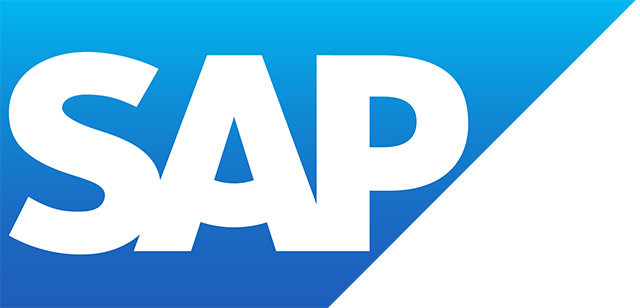SAP Payroll
Filter By
Browse By
- SAP Analytics and AI
- SAP Application Development and Integration
- All SAP Application Development and Integration
- SAP ABAP
- SAP ABAP Development Tools
- SAP ABAP Test Cockpit
- SAP API Management
- SAP BAPI
- SAP Basis
- SAP BRF
- SAP Business Application Studio
- SAP CMS
- SAP Design Studio
- SAP Development Tools
- SAP DevOps
- SAP EAI
- SAP EDI
- SAP Extension Suite
- SAP Fiori
- SAP Fiori Elements
- SAP Integration Suite
- SAP Low Code Application Development
- SAP Low Code Automation
- SAP Netweaver
- SAP Release Management
- SAP UI5
- SAP Web Application Server
- SAP Web IDE
- SAP Business Process Management
- SAP Center of Excellence
- SAP CIO
- SAP Customer Experience
- SAP Data and Data Management
- All SAP Data and Data Management
- SAP BW
- SAP BW/4HANA
- SAP Crystal Reports
- SAP Data Archiving
- SAP Data Center
- SAP Data Governance
- SAP Data Integration
- SAP Data Migration
- SAP Data Quality
- SAP Data Services
- SAP Data Strategy
- SAP Data Visualization
- SAP Data Warehouse Cloud
- SAP DMS
- SAP Document Control
- SAP EIM
- SAP ETL
- SAP ETL Tools
- SAP HANA
- SAP HANA Administration
- SAP HANA Deployment Infrastructure
- SAP HANA Studio
- SAP Master Data
- SAP Master Data Governance
- SAP MDM
- SAP Enterprise Architect
- SAP Enterprise Asset Management
- SAP ERP
- SAP Finance
- All SAP Finance
- SAP Accounting
- SAP AR AP
- SAP Asset Accounting
- SAP Billing Systems
- SAP BPC
- SAP BRIM
- SAP Cash Management
- SAP Central Finance
- SAP Controlling
- SAP COPA
- SAP Cost Center Accounting
- SAP Currency Risk
- SAP e-invoicing
- SAP FICO
- SAP Finance Automation
- SAP Advanced Financial Closing
- SAP Financial Consolidation
- SAP Financial Planning
- SAP FX Risk
- SAP General Ledger
- SAP Global Tax Management
- SAP Hyperion
- SAP Order to Cash
- SAP Payment Processing
- SAP Profitability Analysis
- SAP Rebate Management
- SAP S/4HANA Finance
- SAP SWIFT Compliance
- SAP Treasury Management
- SAP Universal Journal
- SAP Governance Risk and Compliance
- SAP Human Capital Management
- SAP Intelligent Technologies
- SAP Platform and Technology
- All SAP Platform and Technology
- SAP Business Technology Platform
- SAP Cloud
- SAP Cloud Connector
- SAP Cloud Integration Platform
- SAP Cloud Migration
- SAP Cloud Platform
- SAP Cloud Providers
- SAP Cloud Strategy
- SAP Digital Signature
- SAP Container Platform
- SAP HANA Enterprise Cloud
- SAP Digital Asset Management
- SAP Smart Forms
- SAP HEC
- SAP Digital Integration Hub
- SAP Hyperscalers
- SAP Infrastructure
- SAP Messaging
- SAP Quality and Testing
- SAP Security
- SAP Spend Management
- SAP Supply Chain Management
- All SAP Supply Chain Management
- SAP APO
- SAP Asset Management
- SAP Business Network
- SAP Digital Manufacturing Cloud
- SAP Digital Twin
- SAP EWM
- SAP IBP
- SAP Inventory Management
- SAP Label Printing
- SAP Logistics
- SAP Manufacturing
- SAP Manufacturing Automation
- SAP MES
- SAP MII
- SAP MM
- SAP MRO
- SAP MRP
- SAP Order Management
- SAP Plant Maintenance
- SAP PLM
- SAP Production Planning
- SAP S&OP
- SAP SD
- SAP SPM
- SAP Supply Chain Planning
- SAP Track and Trace
- SAP Transportation Management
- SAP System Administration
What Is SAP Payroll?
Payroll is such a vital component to employee satisfaction that many companies are hesitant to make any changes — even if there are potential benefits to updating processes or technologies. This is reflected in SAP Payroll offerings — the traditional on-premise SAP Payroll and the cloud-based SAP SuccessFactors Employee Central Payroll. The cloud offering is essentially identical to the on-premise offering, except for where the servers are hosted.
SAP has hinted at plans to build a next-generation payroll solution, but that often takes a backseat to investments in other areas of its human resources (HR) technology suite.
Making an error on an employee’s paycheck is one of the fastest ways to receive a notice of resignation, so the reticence to change payroll at many companies, and the motivation for SAP to build a new payroll system, is explainable.
What Is SAP Payroll?
Payroll is such a vital component to employee satisfaction that many companies are hesitant to make any changes — even if there are potential benefits to updating processes or technologies. This is reflected in SAP Payroll offerings — the traditional on-premise SAP Payroll and the cloud-based SAP SuccessFactors Employee Central Payroll. The cloud offering is essentially identical to the on-premise offering, except for where the servers are hosted.
SAP has hinted at plans to build a next-generation payroll solution, but that often takes a backseat to investments in other areas of its human resources (HR) technology suite.
Making an error on an employee’s paycheck is one of the fastest ways to receive a notice of resignation, so the reticence to change payroll at many companies, and the motivation for SAP to build a new payroll system, is explainable.
Vendors such as Deloitte offer SAP Payroll and SAP SuccessFactors Employee Central Payroll implementation and consulting services. There are companies, such as Alight, that also administer payroll services for an organization partially or completely with the option to use technologies like SAP Employee Central Payroll.
Many SAP customers also use non-SAP payroll systems that integrate with SAP systems such as ADP or Paychex.
Key SAP Payroll Considerations for SAPinsiders
- Mainstream maintenance for on-premise SAP Payroll is scheduled to end in 2027. Current SAP Payroll customers will have to consider the option of moving to SAP SuccessFactors Employee Central Payroll in the cloud, which currently has no end-of-maintenance date, or a non-SAP payroll product. Staying with on-premise SAP Payroll beyond 2027 will require extra maintenance fees or third-party maintenance services.
- Payroll has slower cloud adoption than other HR technologies. In our recent HR Technology State of the Market report, among surveyed respondents that indicated they were using payroll technology, 18% indicated that the system was currently deployed in the cloud, the lowest cloud adoption rate of any technology mentioned. Cloud payroll adoption is rising, with another 19% currently implementing a cloud payroll solution. However, nearly 11% of respondents indicated having no plans for payroll in the cloud, more than double the proportion of any other technology.
- Payroll accuracy is a top HR objective. In the same HR Technology State of the Market report mentioned above, reducing errors in time and payroll was the top HR technology strategy objective among respondents, which were predominantly HR professionals. Getting payroll right isn’t just a concern for the finance and compliance departments. Those in HR know the importance it holds to their ability to retain talent.
470 results
-

 Premium
Premium
Understand the Difference Between Active and Passive Workflow Substitution
Reading time: 7 mins
Most people understand the concept of workflow substitution and know that you can set up workflow substitution rules in any SAP system release that supports workflow. However, the option of “active” versus “passive” substitution is often underappreciated. Using the example of an urgent invoice, the author explains the difference. Take this situation. A vendor invoice...…
-

 Premium
Premium
Maintain Payment Formats with the Payment Medium Workbench
Reading time: 17 mins
Replace your classic RFFO* payment medium programs with the little-known functionalities of the Payment Medium Workbench (PMW) within the SAP Financials module. Understand the relevant configuration, functionality, and different processes of the PMW. Key Concept The Payment Medium Workbench (PMW) and the Data Medium Exchange Engine (DMEE) are software components that allow you to create...…
-

 Premium
Premium
Set Up SAP Closing Cockpit for Speedier and Better-Controlled Financial Closings in 5 Steps
Reading time: 19 mins
See how to configure the newly updated SAP Closing Cockpit to assign individual tasks and hierarchies properly. Key Concept SAP recently redesigned its ERP-based SAP Closing Cockpit and plans to deliver it with an add-on option of a new task scheduling tool, Central Process Scheduler (CPS). SAP plans to make this generally available to customers...…
-
-

 Premium
Premium
Avoid Pitfalls When Setting Up the Agent Inbox in SAP CRM 2007
Reading time: 11 mins
The agent inbox in SAP CRM Interaction Center can be a centralized location to receive customer and supplier emails. An incoming email triggers a standard workflow, which routes the workflow object to your agent inbox. Find out the client-independent and client-dependent settings you need to make this work. Key Concept The Interaction Center agent inbox...…
-

 Premium
Premium
Secure Business Partner Data in SAP CRM 2007
Reading time: 13 mins
Securing business partner data in SAP CRM 2007 has changed with the introduction of business roles and configuration keys. Find out the four ways you can secure business partner data. Key Concept You can use a configuration key to vary the appearance of a screen depending on the user. You assign the configuration key to...…
-

 Premium
Premium
Understanding the FMLA Workbench
Reading time: 9 mins
The Family Medical Leave Act (FMLA) Workbench assists employers in administering the complex guidelines for determining eligibility and absence management. Understand the components that make up the FMLA Workbench and how each section of the workbench functions. Key Concept The Family Medical Leave Act (FMLA) Workbench is a tracking tool to assist in the administration...…
-

 Premium
Premium
Track and Analyze Changes to Customizing Tables Using Standard SAP Reports and Tools
Reading time: 13 mins
Help SAP users audit configuration changes and reduce the time needed to resolve issues caused by configuration by tracking and analyzing the changes to customizing tables. Key Concept With many different people working on the implementation and support of the SAP ERP HCM system, it is vitally important to track SAP configuration changes. This step...…
-
-

 Premium
Premium
Use the AHP Methodology to More Effectively Define and Evaluate Your SAP Implementation Approach
Reading time: 19 mins
ManagementUnderstand the complexities of breaking down a complex SAP project implementation into manageable chunks, reflecting a scope capable of aligning with and meeting an organization’s specific goals. Build an implementation approach and business case by understanding the advantages and disadvantages of variations of the phased approach. Finally, learn how to use the analytic hierarchy process...…
-

 Premium
Premium
Configure Additional Actions for Efficient Data Maintenance
Reading time: 10 mins
Learn how to configure an additional action and see the advantages of adding one. Key Concept Personnel actions are activities that involve a change of employment status or of employee master data. These activities could be hiring, promotion, transfer, pay change, disciplinary action, change of contract, or separation. You can use personnel actions to capture...…
-

 Premium
Premium
How to Easily and Quickly Revaluate Absence Codes
Reading time: 5 mins
Learn how to simplify the revaluation of absence codes and attendance records in the SAP ERP HCM system. Key Concept A revaluation of absences may occur when certain conditions of the quotas change and the absence has already been entered — for example, vacation leave was entered for the next year before any vacation carryover...…
Become a Member
Unlimited access to thousands of resources for SAP-specific expertise that can only be found here.
Become a Partner
Access exclusive SAP insights, expert marketing strategies, and high-value services including research reports, webinars, and buyers' guides, all designed to boost your campaign ROI by up to 50% within the SAP ecosystem.
Upcoming Events
Related Vendors
Your request has been successfully sent


